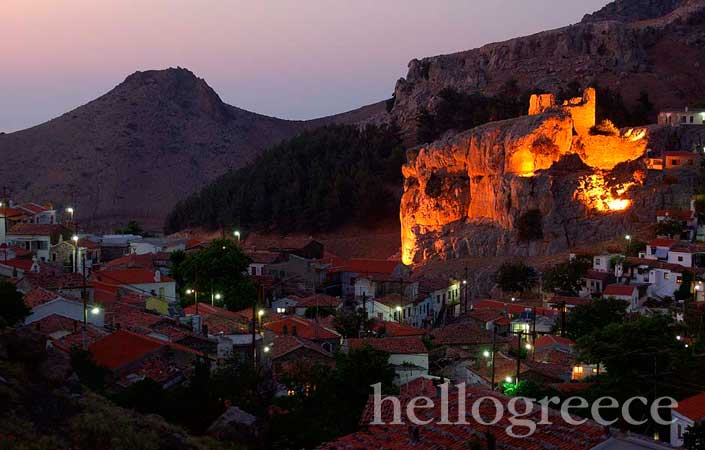Samothrace
Samothrace
Samothrace is in the utmost northeastern part of the Aegean sea, in the Thracian sea and is 32 naval miles from Alexandroupoli.
Samothrace became worldwide famous from the statue “Niki of Samothrace” found today in the Museum of Louvre, and from the “Kabiria Mysteries” performed here in antiquity.
A particularity of Samothrace, not seen in any other island is its wild virgin nature with the steep mountains, the rich vegetation, the forests with sycamore, chestnut and arbutus trees but also the streaming waters, the waterfalls and the beautiful beaches. Characteristic are the plane forests that reach down to the beaches of the island.
Harbor of the island is Kamariotissa and also the secular center of Samothrace with restaurants, graphic taverns, rented rooms and hotels. Five kilometres to the interior is the capital named Chora or Castle or Samothrace. Chora looks as if it climbs to the mountain side with its traditional houses and graphic alleys. Here is the church of The Assumption of Virgin Mary, build in 1875 and inside it are the skulls of the Five Saint Witnesses of Samothrace.
On mountain Saos the climbers and the walkers can enjoy the amazing landscapes of the region.
In Therma you can relax in the spa sources, known since the antiquity for their therapeutic attributes.
Sights
- the archaeological site of Palaiopoli
- the Gatelouzon towers
- The Archaeological Museum with findings from the archaeological site and an impression of the famous Niki of Samothrace as the original is in Louvre Museum.
- an early christian basilica of the 5-6th century
- the medieval Fonia tower
- the natural pools created from the waterfalls called “vathres”
Archaeological site of Palaiopoli
The island was inhabited from the Neolithic era, but became important when Ionians came to stay and imported in Samothrace the Kaviria Mysteries and Samothrace became a religious center and due to its geographic position a commercial center too. Samothrace was a holy island through antiquity and the residence of Thetis and other fairies but mainly a centre of sacramental ceremonies.
Anyone could participate in those mysteries man or woman, slave or free, Greek or barbarian, adult or child. This is a basic difference with other mysteries (eg Elefsinia). The ceremonies took place at the end of the summer and had an international religious and artistic character with the attendance of eminent personalities from foreign countries. The sanctuaries of the great gods are found today in Palaiopoli, on the edges of mountain Saos next to the sea.
In 357 BC in Samothrace took place a historical meeting. In the Mysteries met Philippos II and Olympiada, and here took place the conception of Alexander the Great who changed the flow of history. Philippos was 25 years old and Olympiada 19. They were both heads of pomps, Philippos for the Macedonians and Olympaida of Molosson. Other important people who were mystics are: Orpheus, Hercules, Jason, Odysseus, Arsinoi, Perseas, Ptolemaios, Irodotos, Lysandros etc.
The importance of the Kavirian Mysteries remained until the years when the ancient religions fainted with the prevalence of Christianity.
Information
Transportation
By ship
From Alexandroupoli
Alexandroupoli port authority 0030 25513 56200
Samothrace port authority 0030 25510 41305
Useful
Area: 178 sq.km
Capital: Chora Samothrace
Mountains: Saos 1.614 m.
Samothrace municipality administratively belongs to Evros prefecture (Region of Eastern Macedonia & Thrace).







